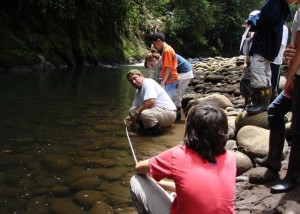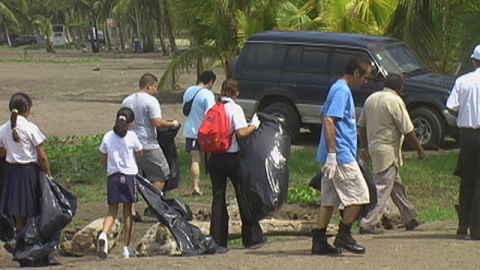Costa Rica News – Costa Rica is home to some of the world’s most endangered species, and it has 5% of the world’s biodiversity. Although it is one of the top countries striving for environmental conservation, Costa Rica was recognized by the UN Development Program (UNDP) in 2011 for its great performance in wildlife preservation. Further, it is the only country to meet all five criteria in measuring eco-sustainability. 2005 marks the year when Costa Rica has fully eliminated deforestation. In 2009, New Economics Foundation awarded Costa Rica as the greenest country in the world. And in 2012, it is the first country in the Latin America region to abolish recreational hunting.
 Because of Costa Rica’s dense flora and fauna species, it became one of the top destinations for volunteer travelers in 2009. Since then, thousands of conservation programs have been established by hundreds of local and international NGOs to help conserve its natural resources. And due of its diverse wildlife and well-balanced ecosystem, 30% of the country’s territory has now been placed as protected by the SINAC (National System of Conservation Areas).
Because of Costa Rica’s dense flora and fauna species, it became one of the top destinations for volunteer travelers in 2009. Since then, thousands of conservation programs have been established by hundreds of local and international NGOs to help conserve its natural resources. And due of its diverse wildlife and well-balanced ecosystem, 30% of the country’s territory has now been placed as protected by the SINAC (National System of Conservation Areas).
International volunteer travelers can also find amazing outdoor adventure while volunteering to sustain marine and land species.
While foreign nationals pay to register in volunteering programs, the locals can do their part in nurturing Costa Rica’s national treasures for free. One can easily extend a hand to clean up a portion of the coastal area during the summer (dry) season, or comfortably sit in his home tutoring English to a grade school student during the winter (rainy) season. These are small suggestions that you can always try. But if you need to be more active in community service, and want to get deeply involved, there are programs for turtle conservation, marine conservation, parks and wildlife conservation, youth development, among others. I’ve compiled a list of bigger things you can try in order to serve your community:
If you live in the Southern Nicoya Peninsula, the Escuela Futuro Verde allows volunteers to teach English, Math, Science, Arts, and Music to their students. You can also help the school facilitate recycling programs, and coordinate field trips to nearby parks and wildlife areas.
The Sarapiqui Conservation Learning Center in the Heredia province is a great institution that offers long-term volunteer opportunities to locals. This program fosters commitment from volunteers to work independently or in groups.
Volunteers commit to 6 months to 1 year of community service by teaching English or by coordinating after-school programs. Volunteers are given free board and work-related expenses during their stay.
Spanish at Locations is a website that offers free volunteering opportunities in Turrialba. It offers free volunteer jobs at a small primary school, at El Hogarcito orphanage, and at a retirement home, among others. For a complete list of what you can do for the Turrialba community, go to: http://www.spanishatlocations.com/volunteer/volunteer-in-costa-rica/
In the Playa Jaco and Playa Hermosa area on the central Pacific coast, the local Jaco chamber of commerce puts together beach clean ups and are always excepting help from locals. You can also volunteer to tutor in the Jaco library to under privileged children.
In Costa Rica, or in any place in the world, one can think of more than a hundred ways to give back to the community. Care institutions for the elderly, disabled, and the orphans always need an extra hand. Museums, cultural parks, and religious institutions never close their doors to people who wish to help others. Community service can be in the form of collecting goods for calamity victims. In a country with a 94% literacy rate, volunteering can also be in the form of donations to scholarship funds for youth education.
Many of the programs in Costa Rica focus on the preservation of wildlife and marine species. As a top tourist destination, volunteers can also preserve this reputation by keeping watch of the streets for tourists, especially at night. Volunteers can go on rotating schedules to man urban streets, particularly downtown San Jose, where petty thieves strike tourists even on broad daylight.

